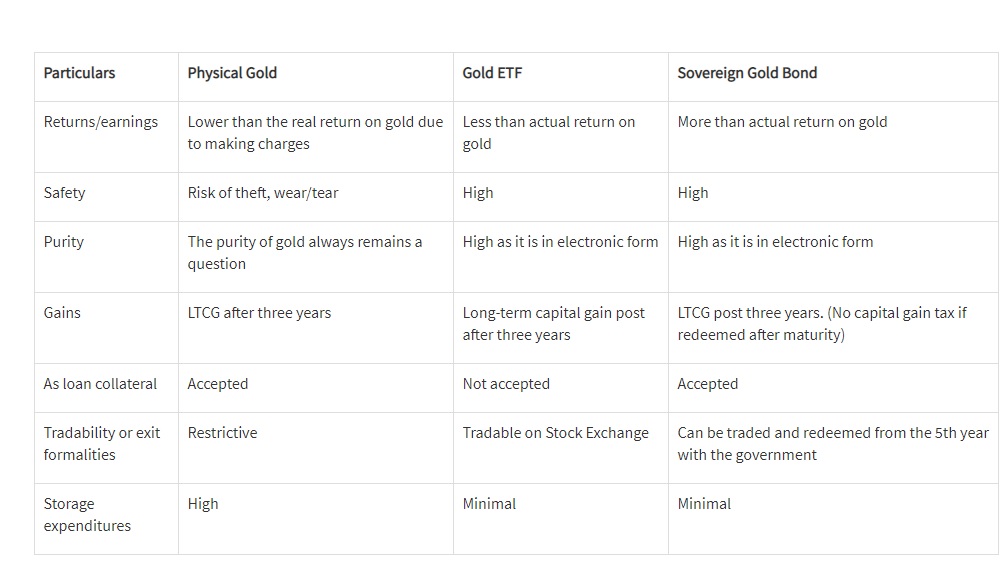Govt. Offers Sovereign Gold Bonds At 2.5%; Should You Buy Actual Gold Or Gold Bonds?

Govt. Offers Sovereign Gold Bonds At 2.5%; Should You Buy Actual Gold Or Gold Bonds?
The Reserve Bank of India said on April 13 that the government will issue sovereign gold bonds beginning April 20 offering an annual interest rate of 2.5% to domestic investors.
Read to find out more…
Sovereign Gold Bond 2020-2021
Sovereign Gold Bond (SGB) 2020-21 will be issued by Reserve Bank India on behalf of the Government of India.
RBI said, “The Government of India, in consultation with the Reserve Bank of India, has decided to issue Sovereign Gold Bonds. The Sovereign Gold Bonds will be issued in six tranches from April 2020 to September 2020…”
The Government of India introduced the SGB Scheme in November 2015 as an alternative to own gold for the investors. It belongs to the debt fund category.
India’s gold imports have dwindled more than 73% year-on-year in March as record prices and the lockdown to curb coronavirus crushed the retail demand.
Here is All You Need to Know About the Sovereign Gold Bonds Scheme 2020-21!
Only the Government of India Stocks (on RBI’s behalf) can issue gold bonds as per the GS Act, 2006. Investors will receive a Holding Certificate for it and will be able convert it to Demat form.
The Bonds will be denominated in multiples of grams of gold with a basic unit of 1 gram and the tenure of the SGB will be 8 years with exit option after 5th year to be exercised on the interest payment dates.
Any Indian resident – individuals, Trusts, HUFs, charitable institutions, and universities – can invest in SGB. You may also invest on behalf of a minor.
The minimum permissible investment will be 1 gram of gold and the maximum limit of subscription shall be 4 kg for individuals, 4 kg for HUF and 20 kg for trusts and similar entities per fiscal (April-March).
The current interest rate for SGB is 2.5% annually paid twice a year on the nominal value. Returns are usually linked to the current market price of gold.
The Know-your-customer (KYC) norms for SGB are similar to when you buy physical gold. KYC documents such as a copy of Driving License, PAN Card, Passport, or Voter ID are important.
The redemption price has to be in rupees, based on an average of the closing price of gold of 999 purity in three previous working days.
Advantages of SGB Over Physical Gold!
- SGBs carry none of the risks that are associated with physical gold, except the market risks. With no hefty designing charge or TDS nobody can steal it or change its ownership like physical gold. Hence the storage prices of SGBs are also minimal when compared with physical gold.
- A guaranteed annual interest at the rate of 2.5% (on the issue price), this is the most recent fixed rate.
- Indexation benefits if you transfer your bond before maturity. There is also a sovereign guarantee on the redemption money as well as on the interest earned. A long-term capital gain on physical gold can be seen after three years.
- While the trading of physical gold is restrictive in nature, you can trade SGBs at stock exchanges like National Stock Exchange or Bombay Stock Exchange, among others. This can be done within a specific date (at the discretion of the issuer).
- Some banks accept SGB as well as physical gold as collateral/security against secured loans. Hence, they will treat it as a gold loan after setting the loan-to-value (LTV) ratio to the value of gold. The India Bullion and Jewellers Association Limited determines this.
- The purity of physical gold is highly questionable, whereas SGB have higher purity with them being in an electronic form.
Basically, SGBs are new-age investment vehicles for those interested in the gold sector.


Comments are closed, but trackbacks and pingbacks are open.